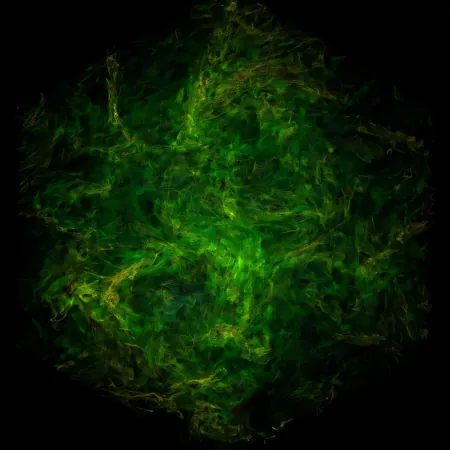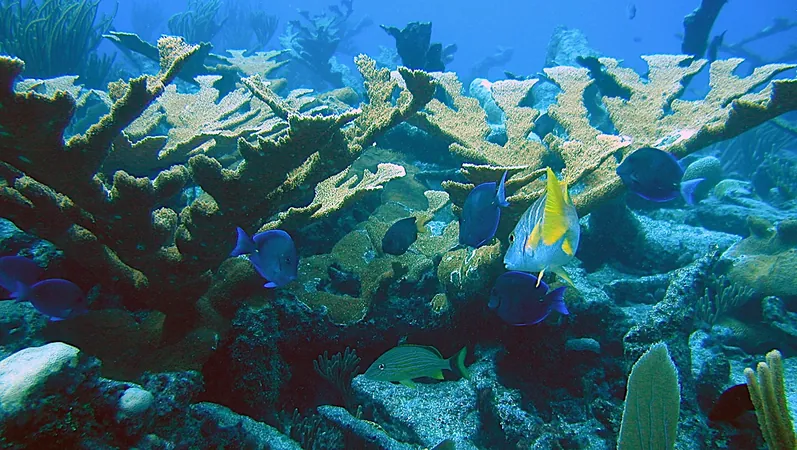
Unlocking the Secrets of Star Formation: How Turbulence Shapes Molecular Clouds
2024-10-30
Author: Nur
Did you know that turbulence, the same phenomenon that can turn a smooth airplane ride into a bumpy adventure, plays a crucial role in the birth of stars? New groundbreaking research has uncovered how turbulent movements within giant molecular clouds are instrumental in shaping the very structures necessary for star formation in our Milky Way galaxy.
In a fascinating study published in the journal Science Advances, a team of scientists has harnessed advanced simulations to delve into the complex interaction between turbulence and cloud density. Pockets of density within these clouds serve as the birthplaces for new stars. In fact, our own Sun was birthed about 4.6 billion years ago in a similar lumpy portion of a collapsing molecular cloud.
Evan Scannapieco, a leading astrophysics professor at Arizona State University and the principal author of the study, stated, “The main process that governs when and how quickly stars are born is turbulence, as it shapes the structures responsible for star formation. Our study reveals the mechanisms behind the formation of these structures.”
Giant molecular clouds are notorious for their chaotic behavior, influenced by gravity, the swirling motions of galactic arms, and potent forces like jets and explosions from young stars. The turbulence can generate shocks that create significant changes in the density of the cloud, setting the stage for stellar birth.
To carry out their exploration, the researchers utilized intricate simulations involving tracer particles that mimic the journey through a molecular cloud. As these particles navigated the cloud, they recorded variations in density, essentially constructing a historical timeline of how density pockets evolve over time. This study included collaboration from esteemed scientists, including Liubin Pan from Sun Yat Sen University, Marcus Brüggan from the University of Hamburg, and Ed Buie II from Vassar College.
One of the most intriguing findings revealed that the dynamics of shocks, which slow when they encounter high-density gas and speed up in low-density areas, heavily influence the path of these particles. This process is similar to how an ocean wave accelerates when it rushes into shallower waters.
When particles encounter these shocks, the surrounding area becomes more dense. However, it's critical to note that in denser regions, the turbulent motions can no longer increase their density—a vital insight into where stars are most likely to emerge.
Unlike previous studies that merely identified the structures of molecular clouds, this simulation enables scientists to track their developments over time, significantly enhancing our understanding of stellar genesis.
With NASA's James Webb Space Telescope currently investigating the intricate structures and chemistry of molecular clouds, we can expect even more revelations on how turbulence contributes to star formation. The new measurements and insights from this research will undoubtedly catalyze progress in our comprehension of the cosmos, revealing not just where stars can form, but also the history carved by the gas within these galactic nurseries.
As we continue to decode the mysteries of the universe, these findings underscore the elegant dance of turbulence and density that fuels the birth of stars, reminding us that each glimmering light we see in the night sky has a story that begins in the chaotic yet beautiful realms of molecular clouds.




 Brasil (PT)
Brasil (PT)
 Canada (EN)
Canada (EN)
 Chile (ES)
Chile (ES)
 Česko (CS)
Česko (CS)
 대한민국 (KO)
대한민국 (KO)
 España (ES)
España (ES)
 France (FR)
France (FR)
 Hong Kong (EN)
Hong Kong (EN)
 Italia (IT)
Italia (IT)
 日本 (JA)
日本 (JA)
 Magyarország (HU)
Magyarország (HU)
 Norge (NO)
Norge (NO)
 Polska (PL)
Polska (PL)
 Schweiz (DE)
Schweiz (DE)
 Singapore (EN)
Singapore (EN)
 Sverige (SV)
Sverige (SV)
 Suomi (FI)
Suomi (FI)
 Türkiye (TR)
Türkiye (TR)
 الإمارات العربية المتحدة (AR)
الإمارات العربية المتحدة (AR)